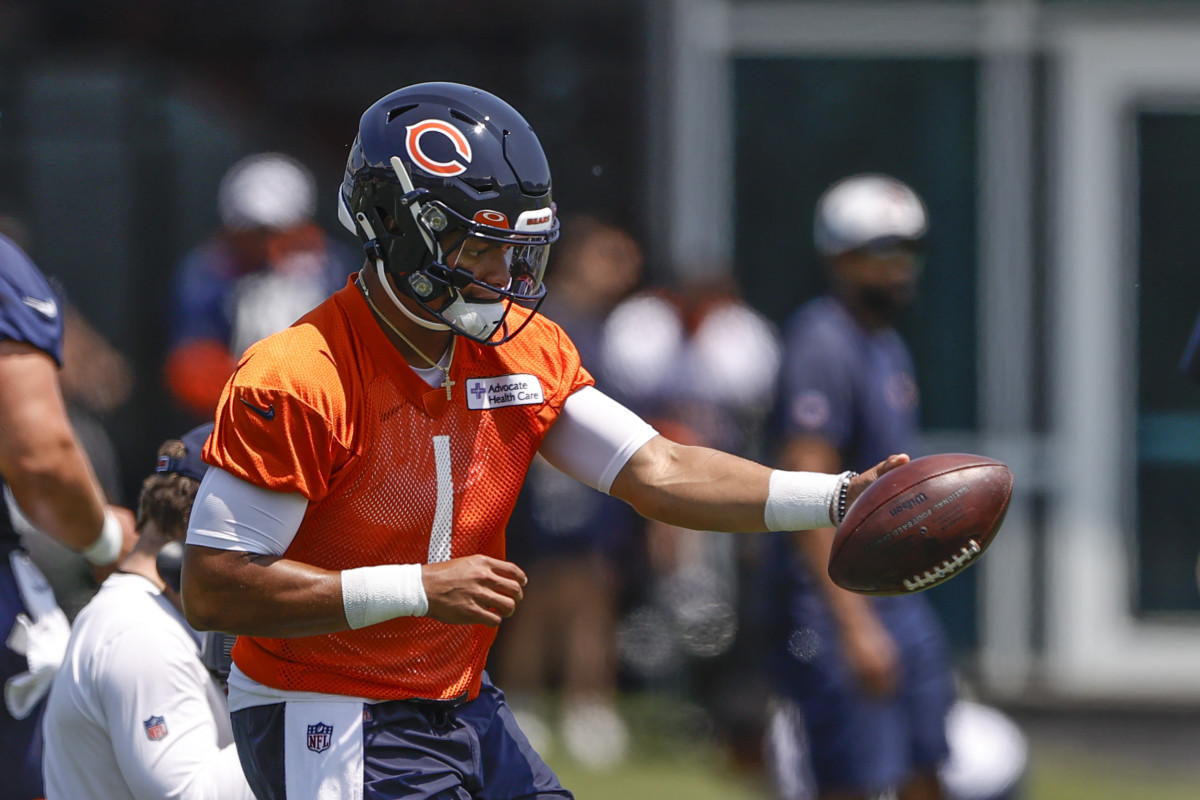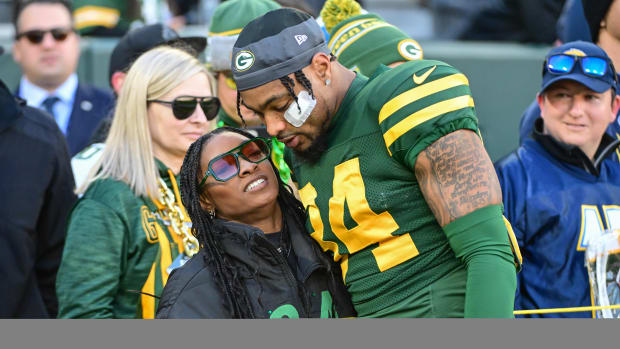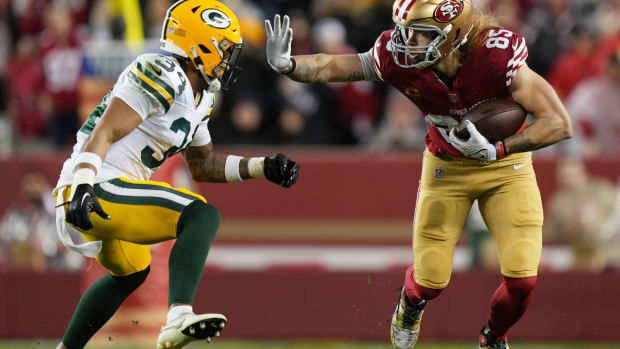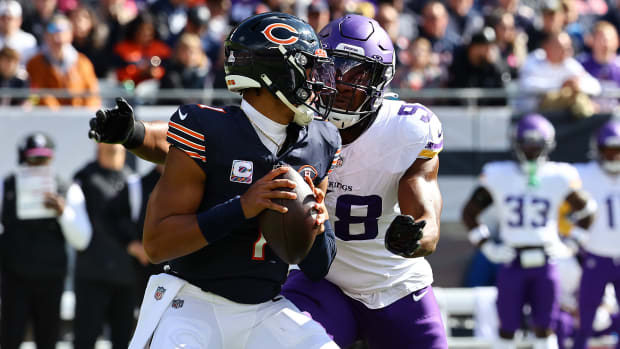Putting Together Bears Offensive Pieces

The Bears are about to put rookies with the veterans for the first time at organized team activities.
If they hope to see signs a youg player can develop quickly into a real contributor, it could begin to become apparent this week in these non-contact practices.
"I think the ones that are really good, that are gonna be starters in the league, I don't think it takes very long. I really don't," coach Matt Eberflus said. "I think it takes a couple practices and then when they get with the vets. Once they get with the vets, they'll be like, 'Oh, OK, I can do this.' And then they just go.
"It doesn't take very long for the guys that can do that."
The Bears could really use that kind of rapid progress from rookies considering the holes they have at several positions, particularly on offense.
OTAs give them the first real opportunity to look at the full squad assembled to see where they might still need help or where players might develop quickly, and where they might have veterans who improve because they're in a different system with different coaches.
"I think the system will enable some of these guys to play at their potential," offensive coordinator Luke Getsy said.
The initial two minicamps set up first veterans and then rookies with information needed to compete. The actual full-squad competition begins with OTAs.
"I can't wait to see these guys running around again in OTAs," Getsy said. "That miniccamp, everything was so new and everything, guys were spinning a little bit still.
"I feel like everyone's got a really good grasp of what's going on right now. So it'll be fun to watch them in OTAs."
They wouldn't mind seeing it from some players acquired in free agency or as street free agents, as well. The holes in the lineup are opportunities for young players as well as second-chance guys who have signed on in free agency.
Most of those players are at wide receiver but not all of them.
Here's what the Bears could accomplish on the offensive side at OTAs.
1. Linking Justin Fields with Wide Receivers
Fields can start throwing to Velus Jones now to build one possible key connection.
He hasn't really practiced with Byron Pringle, Equanimeous-St. Brown, David Moore, Tajae Sharpe or Dante Pettis. The Bears' answer to finding help for their quarterback has been a collection of receivers hoping for a second chance in the league. They'll throw them all onto the field and hope competition produces two or three receivers who can at least be contributors.
Pringle should be a given after a 42-catch season as the No. 3 for Kansas City. Are there other sleepers they've found by shopping through free agency's version of a rummage sale?
Fields starts to throw to them and they'll start to show what they can do as a connection develops.
"I think we have enough guys on this team that have played a lot of ball in the league," Getsy said. "I think it's just that experience of playing with the quarterback and teaching him the body languages, the signals you wanna send to him when you're ready to make a break."
2. Red Zone Awareness
One thing they can eventually do in OTAs besides simply connect Fields and receivers is become adept immediately at red zone production. Teams can hold 10 total days of OTA practices, which include 7-on-7, 9-on-7, and 11-on-11 with no live contact. They're not in pads. But passing in the red zone in full squad, 9-on-7 or 7-on-7 can be done extensively in the red zone without contact.
Fields doesn't just have wide receivers he needs to build a connection with, as the team has only one returning tight end in Cole Kmet. And Kmet himself could stand to improve his connection with Fields in the red zone after a second season when he went without a touchdown catch. Ryan Griffin, James O'Shaughnessy and Rysen John are the veteran tight ends Fields needs to get familiar with, especially in the red zone.
The Bears haven't said it, but it seems they're looking for players who understand the importance of making plays in that end of the field. Some of the wide receivers they signed have unusually high ratios of touchdowns to total receptions for players who were waived, cut or went unsigned. Even if they failed elsewhere, they were able to get into the end zone.
Sharpe, for instance, has 117 receptions in four seasons that he was able to stay healthy and play, and 16 of those went for TDs. Pettis has just 52 career catches but nine of them went for TDs.
The Bears can work at those touchdown connections in OTAs, especially in the red zone.
3. Offensive Line Ignition
Without contact, it can seem a pointless endeavor for offensive linemen at OTAs but this isn't really the case.
Particularly with the wide zone blocking scheme the Bears are setting in motion, they need offensive linemen starting out plays in sync. Timing really matters and linemen can work at that drop step or side step used to initiate the wide zone blocking, and build a rhythm even when they are not absorbing contact from defensive linemen.
Establishing required offensive line cohesiveness needs to start somewhere and when they can't use pads yet this is a good point to begin building it.
They're looking for quickness and ability to move out of their stance quickly, and no one needs pads on to display this trait.
Twitter: BearDigest@BearsOnMaven






